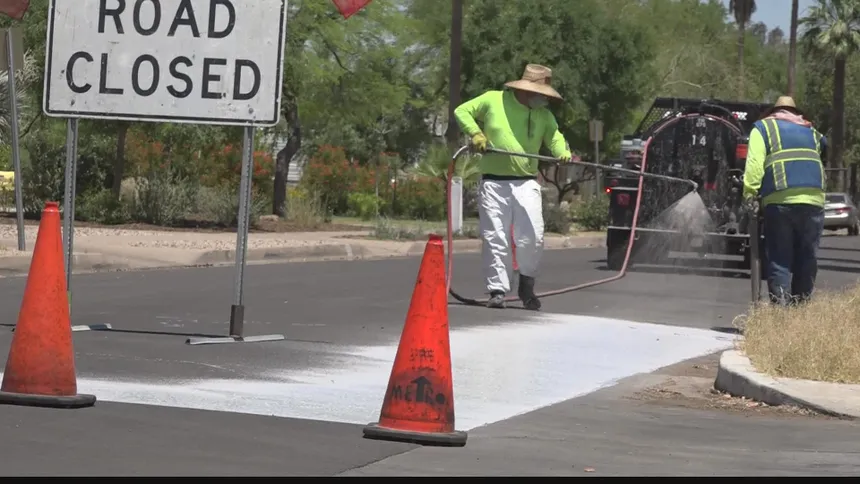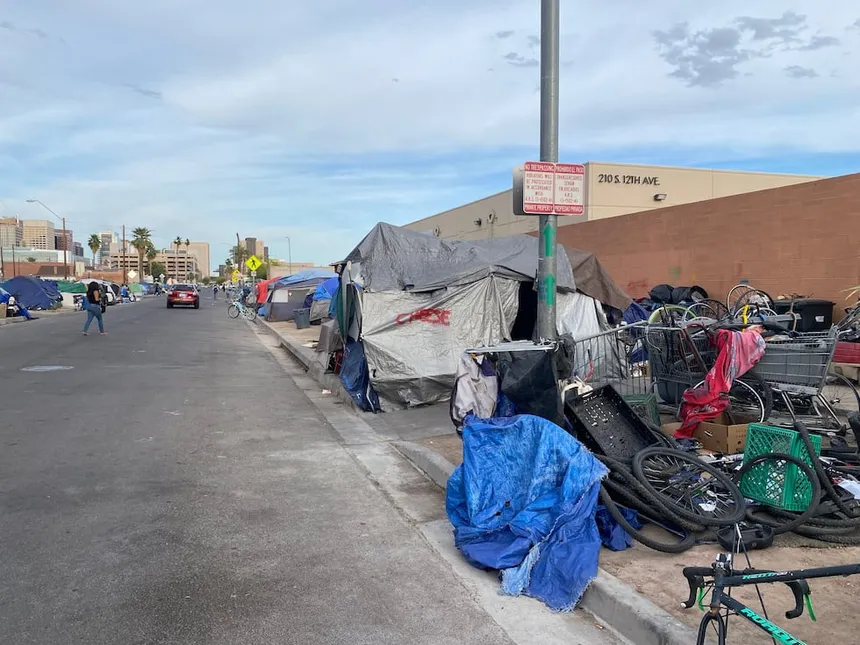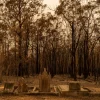As the sun dips below the horizon in Phoenix, Arizona, the city’s scorching concrete terrain continues to radiate heat, refusing to relinquish its grip on the city even in the evening hours. The record-breaking heatwave that has gripped the city for 19 consecutive days, with temperatures soaring above 110F (43.3C), has left many citizens scrambling for relief. With most cooling centers closing before nightfall, the dearth of options has sparked a chorus of outrage and frustration from city residents, particularly those who are most vulnerable to the effects of heat.
Stacey Champion, a community advocate who has dedicated her career to ensuring better protections for the city’s most vulnerable residents, argues that the lack of options for those left to grapple with the rising nighttime temperatures is a testament to the city’s failure to adapt to the changing climate. “Heat is an insidious silent killer,” she says, “and this is not a today problem, we have seen it coming.” Champion has been a vocal critic of the city’s lack of preparedness, pointing out that even in the face of dire warnings and record-breaking temperatures, the city has failed to take adequate measures to ensure that cooling centers remain open later.
As the city’s office of heat response and mitigation struggles to find ways to keep more facilities open later, critics like Champion are demanding more action from city officials. “We know the public health risks increase exponentially with temperature,” says Director David Hondula, “every additional degree we add to the forecast becomes all the more dangerous.” Hondula acknowledges that the city is working to address the issue, but many advocates argue that more needs to be done to keep cooling centers open late.

Despite the city’s efforts to secure widespread access to cooling centers and hydration stations during the day, most facilities close before nightfall. In a city of over 1.6 million people, there is only a single center that operates around the clock, leaving many without access to relief as the temperature soars. The consequences are deadly, particularly for those who are unhoused, elderly, or have limited access to resources.
The city’s transportation program, which provides free Lyft rides to residents who call 2-1-1, stops operating at 5pm each day, further exacerbating the problem. “It is a very big ask for a lot of people to be involved at all – let alone longer hours,” says Cleo Warner, human services planner for the Maricopa association of governments, which runs the city’s heat relief network.
As the heatwave rages on, city officials and advocates are calling for stronger support from federal agencies and a matching emergency response to heat events that other natural disasters receive. Phoenix’s mayor, Kate Gallego, has been pressuring the Federal Emergency Management Agency (Fema) to provide similar levels of relief, arguing that it is time for the federal government to take heat as seriously as other natural disasters. For Stacey Champion, the issue is a “terrible blatant failure of city, county and state” that has devastating consequences for those who are most vulnerable.
As the temperature in Phoenix dips to a sweltering 114F (45.5C) on a typical afternoon, the need for relief becomes even more pressing. As people begin to die in April, long before the peak summer months, the failure to address the crisis is all the more glaring. It is a stark reminder that the city’s lack of preparedness is not just a short-term problem, but a long-term failure to adapt to the changing climate.

